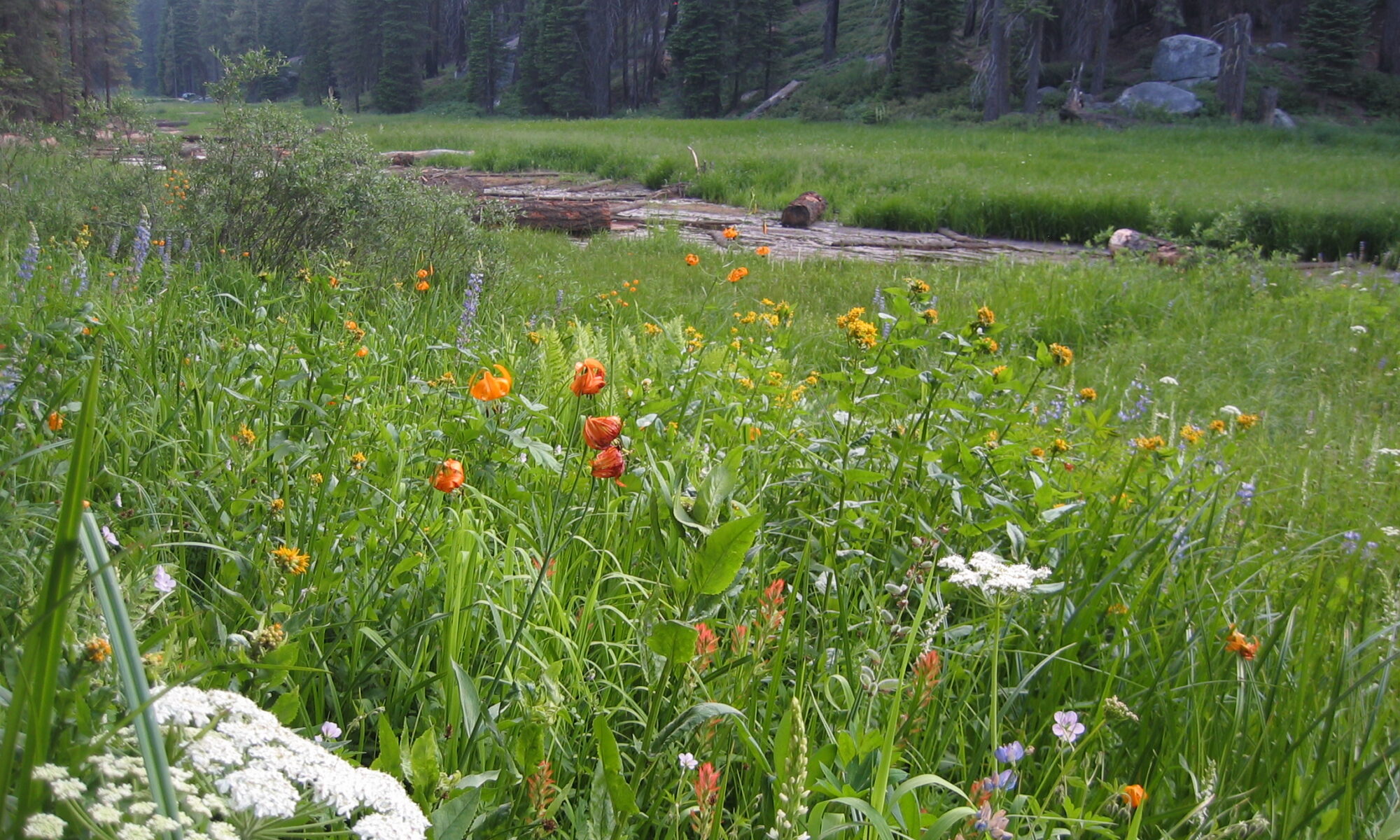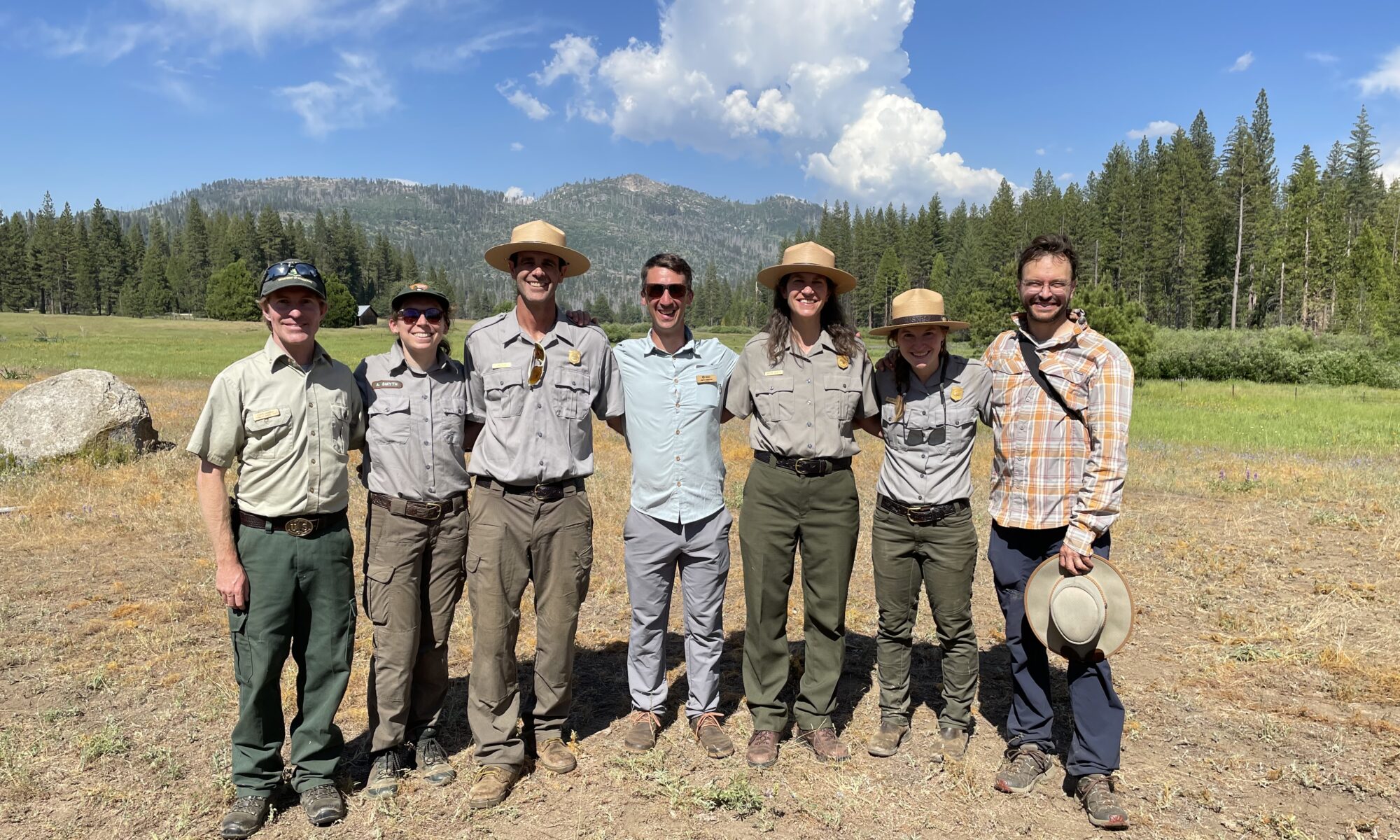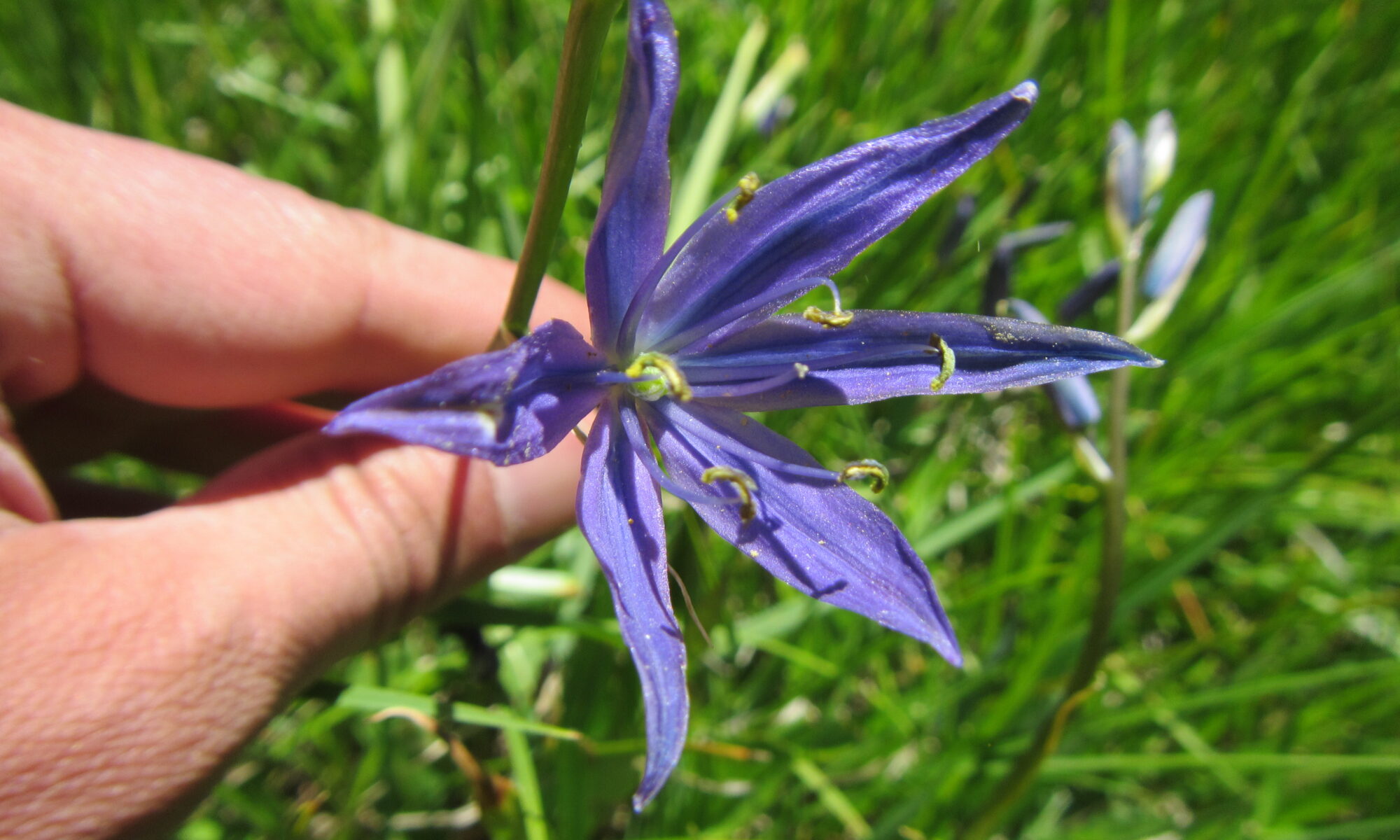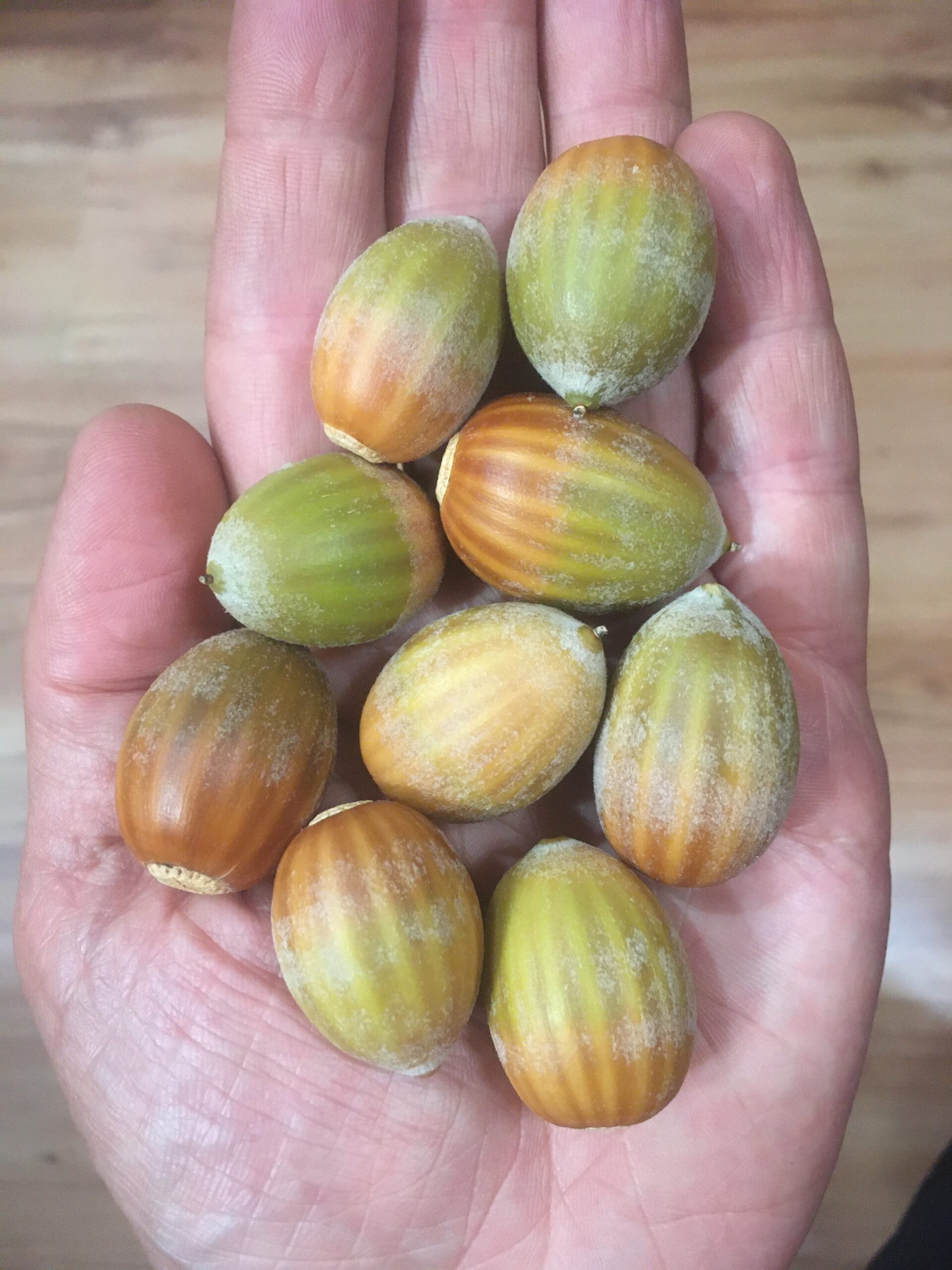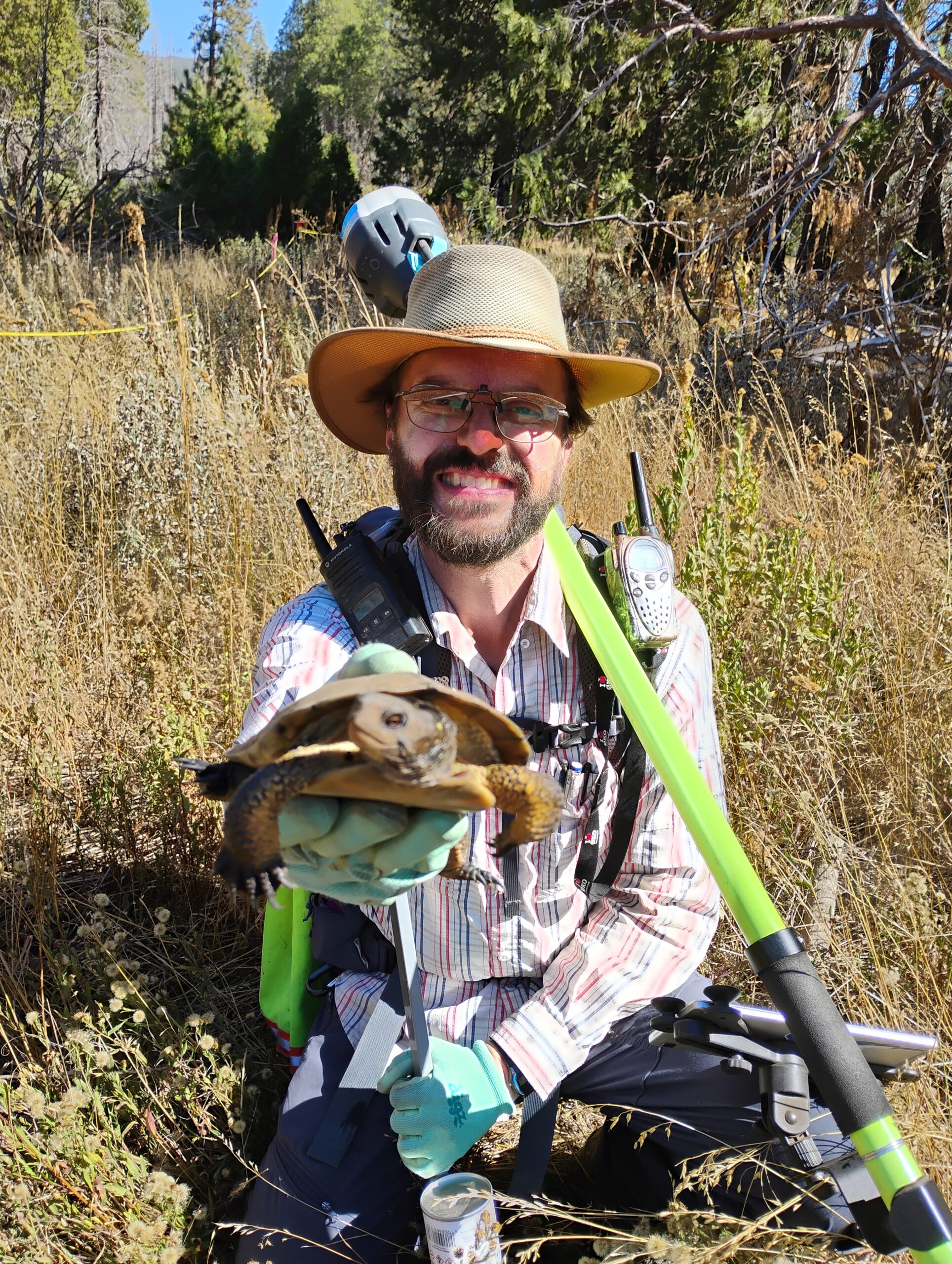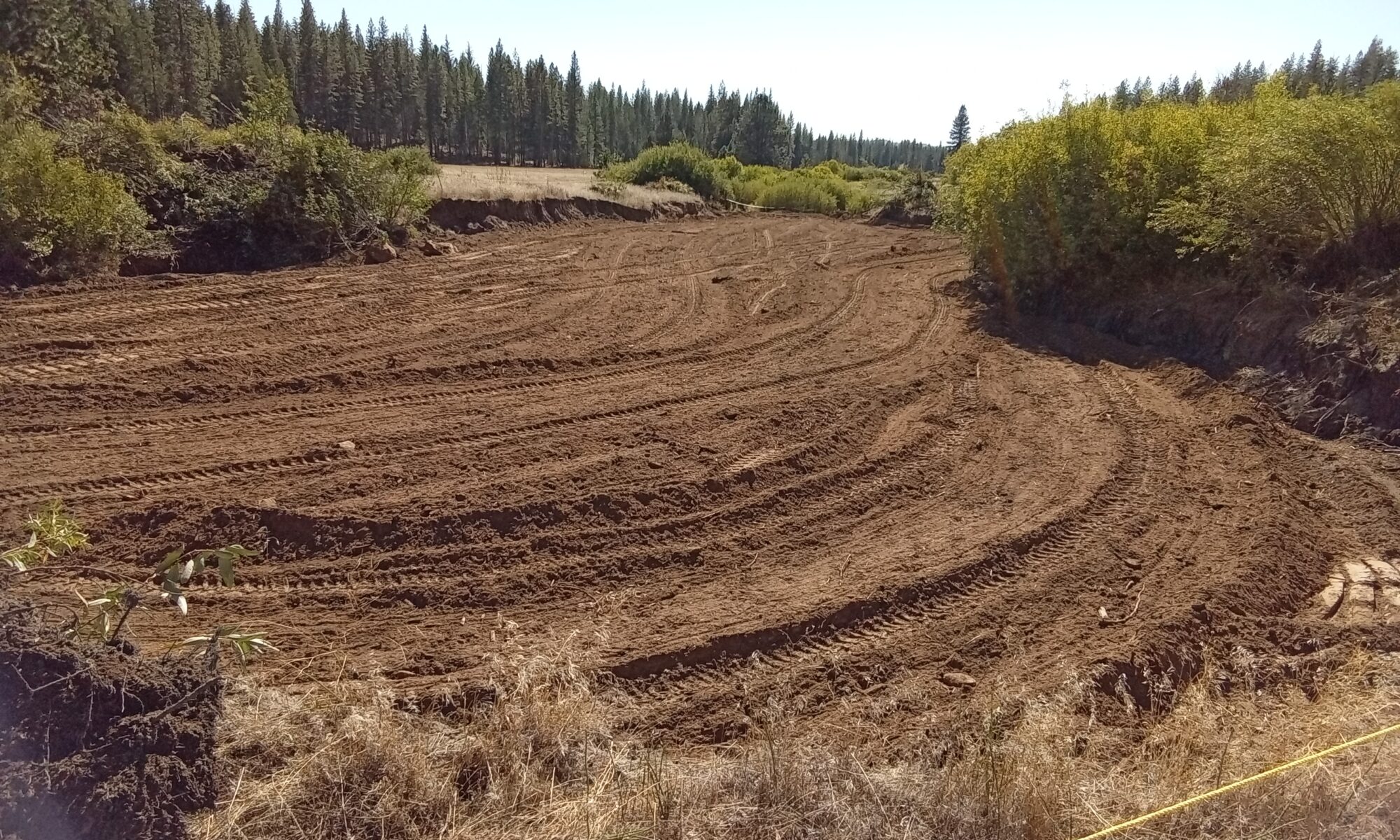Our National Parks and Forests can’t protect themselves. It takes a team of skilled and dedicated workers, most of whom are federal employees, to keep these lands unspoiled and accessible for you and me. We inherited this fortune, and it’s our responsibility to ensure that we don’t trash these treasures, and to maybe even improve them a bit as a gift to the next generation of lucky Americans. From left, Curtis Kvamme, Stanislaus National Forest; Allison (Slim) Smyth, Yosemite National Park; Tim Kuhn, Yosemite National Park, Matt Freitas, American Rivers; Athena Demetry, Yosemite National Park; Mel Steller, Yosemite Naitonal Park; me.
World Wetlands Day 2025
Introducing camas lily (Camassia quamash), a lovely purple-flowered bulb that grows in wetlands throughout the western US. Individuals can live 15-20 years, and won’t flower until they’re 3 or 4 years old. Native Americans, especially in the Pacific Northwest, consumed the bulbs as a major part of their diet. They fed camas bulbs to Lewis and Clark’s starving exploration party as they moved across what is now western Montana, Idaho, and eastern Washington. This summer I’ll be starting a project at Weippe Prairie, part of the Lewis & Clark National Historic Trail and Nez Perce National Historical Park. Our main goal will be to reestablish the wetland and ecological conditions to create dense patches of camas lily. Prior to large-scale agriculture, camas covered entire wetland valleys for miles. On June 12, 1806 the Lewis and Clark expedition passed through Weippe Prairie on their return home and marveled that “the quawmash is now in blume and from the colour of its bloom at a short distance it resembles lakes of fine clear water, so complete is this deseption that on first sight I could have swoarn it was water.”
Time lapse of Ackerson restoration
55 days in 13 seconds
Widespread Losses of Birds in All Habitats–Except for One… Wetlands
The 2022 State of the Birds report (the most recent available) describes how investment in conservation and restoration of wetlands has led to critical gains in wetland-dependent bird species. This is an important and singular ray of sunshine in an otherwise gloomy report detailing the broad decline of birds across the US.
“The trends for our nation’s birds reveal a vital message. Birds are declining overall in every habitat except in wetlands, where decades of investment have resulted in dramatic gains. Conservation works when we give birds and nature a chance. Let’s do more to save our nation’s birds and benefit people in every state.”
A good acorn year
The 2023-2024 geomorphic restoration of Ackerson Meadow wrapped up last week with the final filling of a 160,000 cubic yard erosion gully network. The next phase of work will be to establish native plants that will stabilize the meadow for centuries to come. In addition to planting wetland plants in the meadow, we’ll be planting upland trees, shrubs, and grasses in the excavation areas. And one tree that I’m hoping will thrive on the sunny slopes is the California black oak, Quercus kelloggii. There are a few big beautiful specimens of this species around the edge of Ackerson Meadow and a couple of them produced an excellent acorn crop this year. Some acorns were sent to the Park for growing into seedlings that will get planted in a year or so. But we also directly planted a bunch of acorns into the bare dirt slopes. Some of the equipment operators helped; it was a fun way to wrap up the year, putting seeds into the ground that we can watch grow over the coming years.
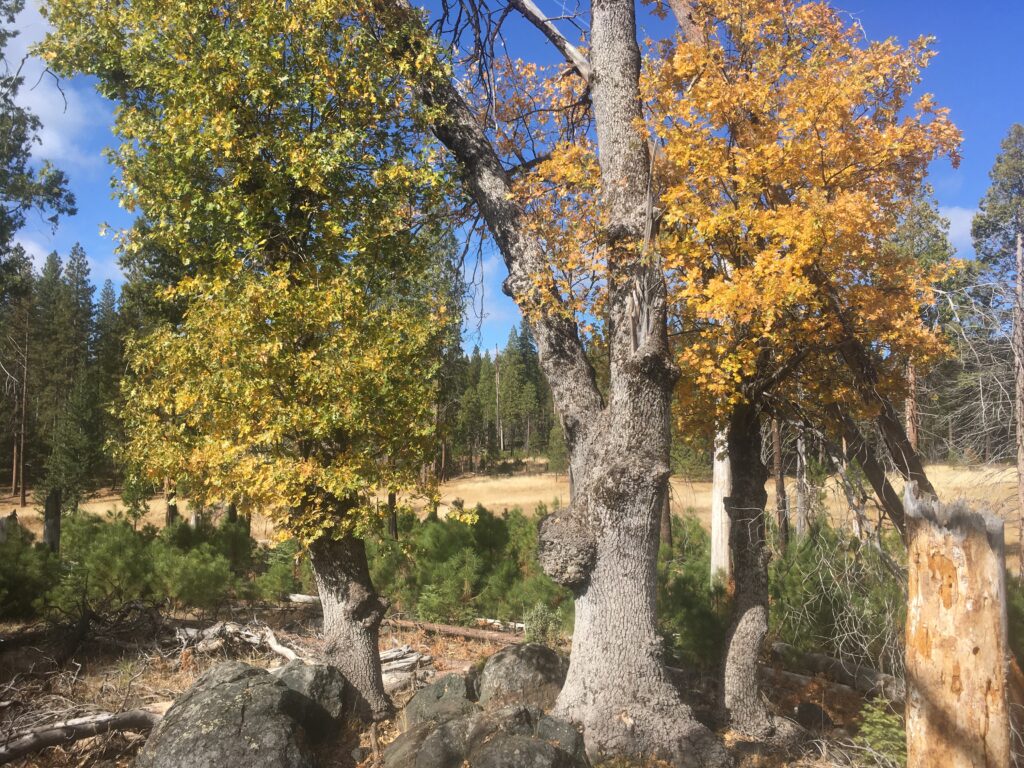
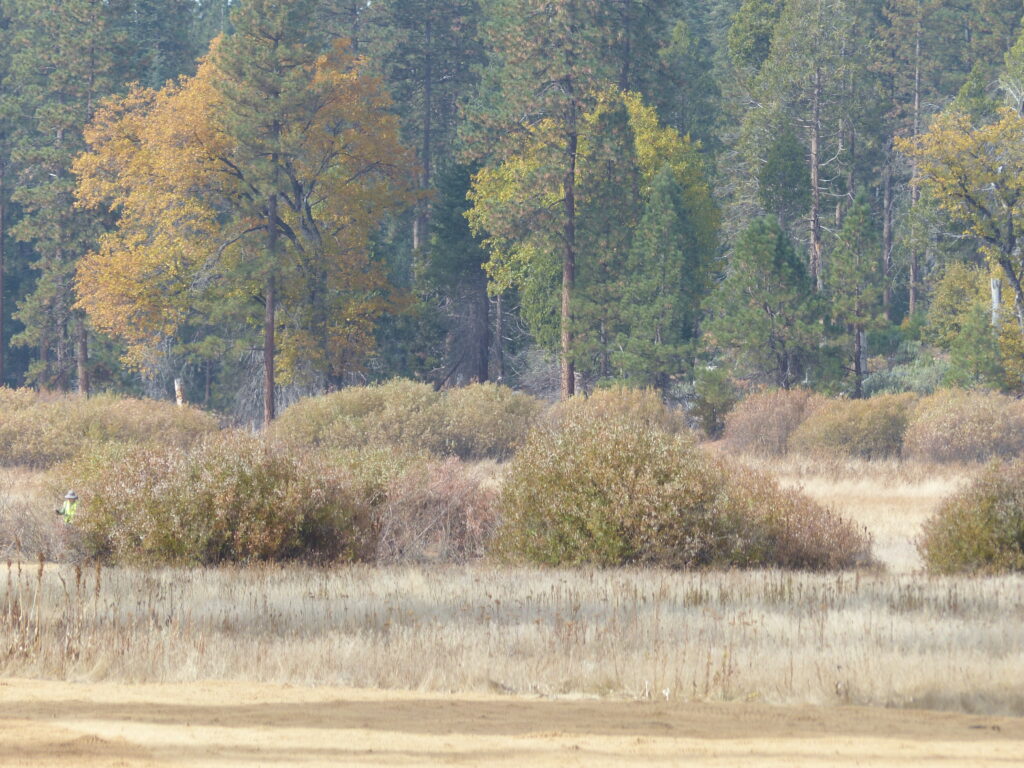
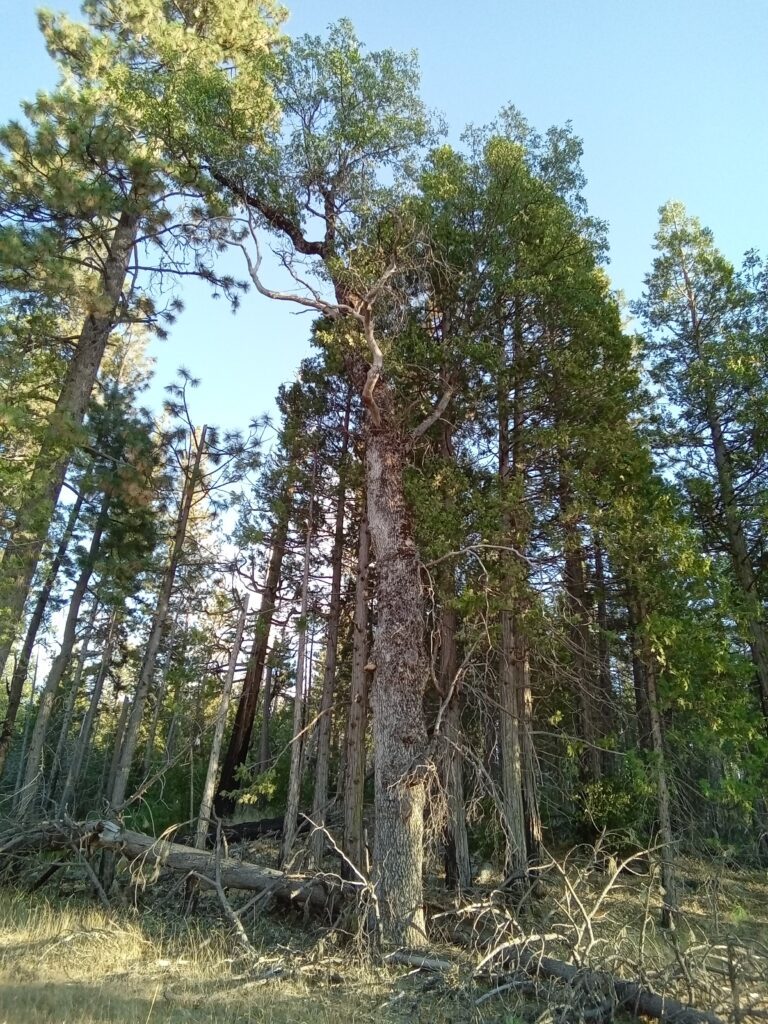
My first find of a northwestern pond turtle in Ackerson
While doing topographic surveying in support of the gully-fill restoration at Ackerson Meadow, I found a pond turtle basking in the sun in the section of the gully that was to be scraped clean in the following days by heavy machinery. Yosemite deploys a team of aquatic biologists to search the channel ahead of the machines, finding and removing turtles to safe locations. They’ve found dozens of turtles, but this was my first one! Thanks to Pando for the photo of me and my turtle.
Great grey owls at Ackerson during restoration work!
Sound on! Video of a juvenile great grey owl calling from the top left of the snag in the middle of the frame.
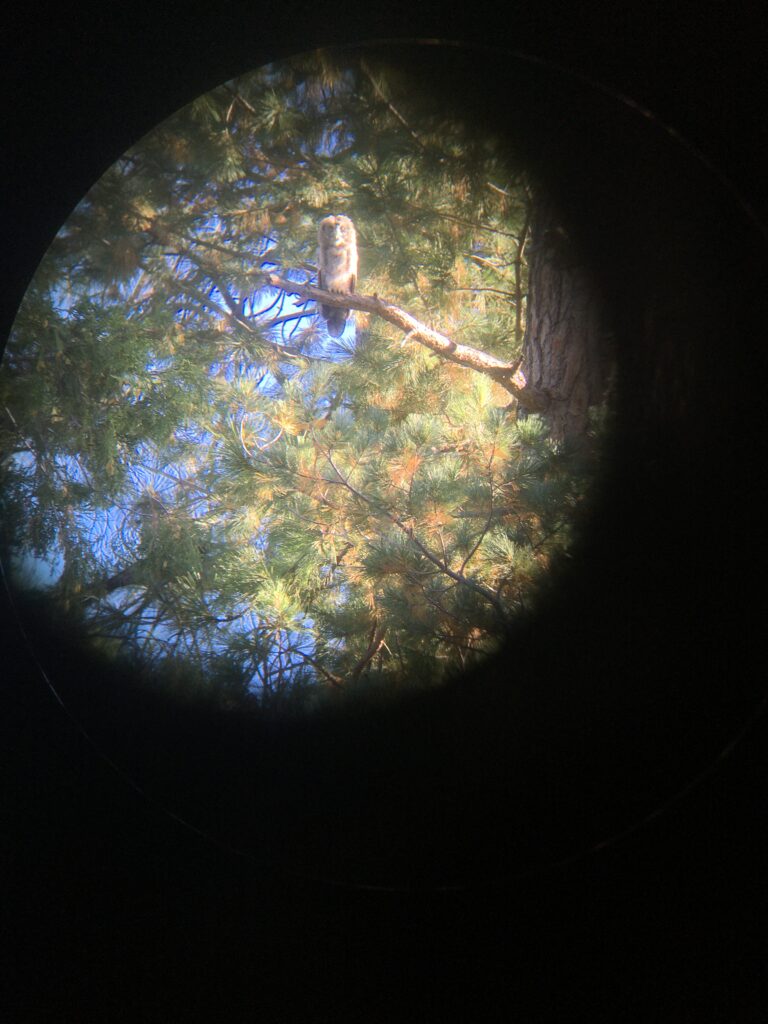
Photo of a fluffy juvenile (there were at least two visible at once in this area) taken on my phone through my binoculars.
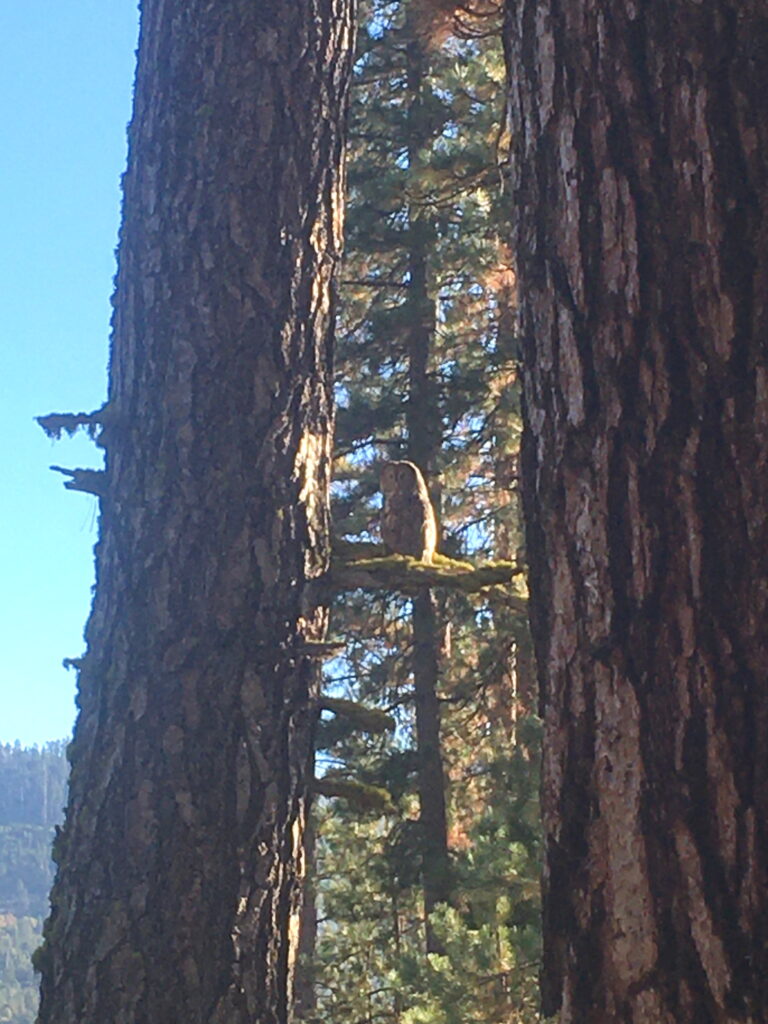
This is an adult hunting the Phase 1 section of Ackerson Meadow that was restored last year. The owl is about 12 feet off the ground and was 20-30 feet away from me.
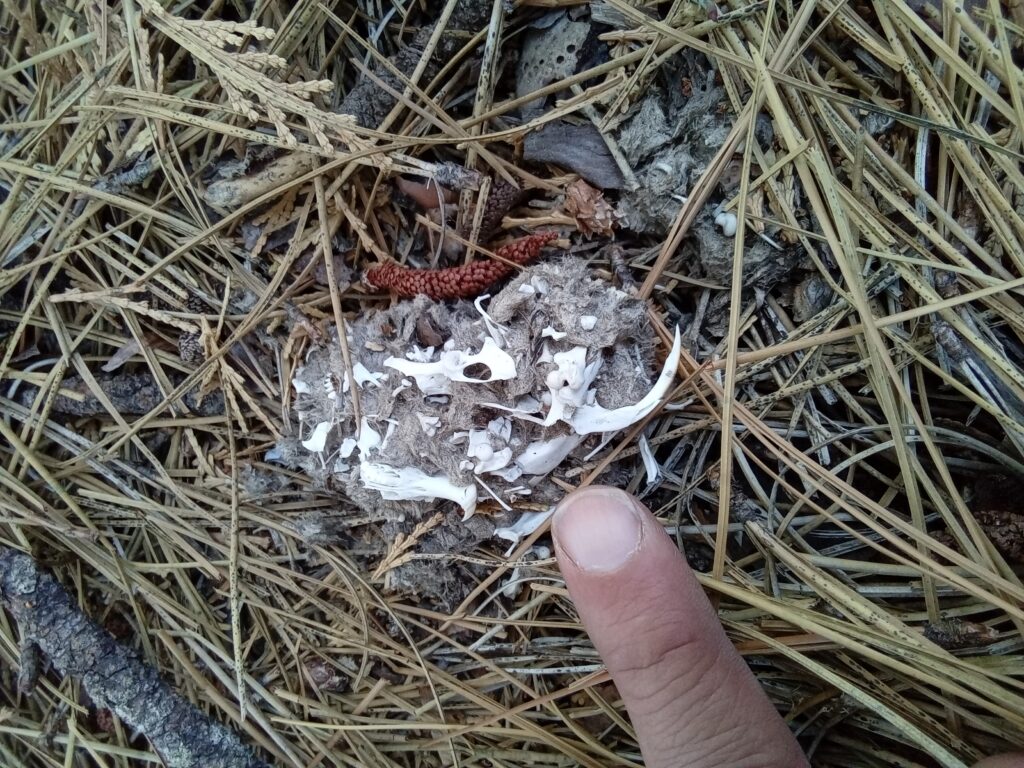
An owl pellet full of rodent bones. https://en.wikipedia.org/wiki/Pellet_(ornithology)
The cows came home
A portion of Ackerson Meadow remains in the Stanislaus National Forest, with an active grazing lease. About 300 cattle are gathered here as part of the fall roundup, calf splitting, and prep for the drive down to winter grounds in the Central Valley.
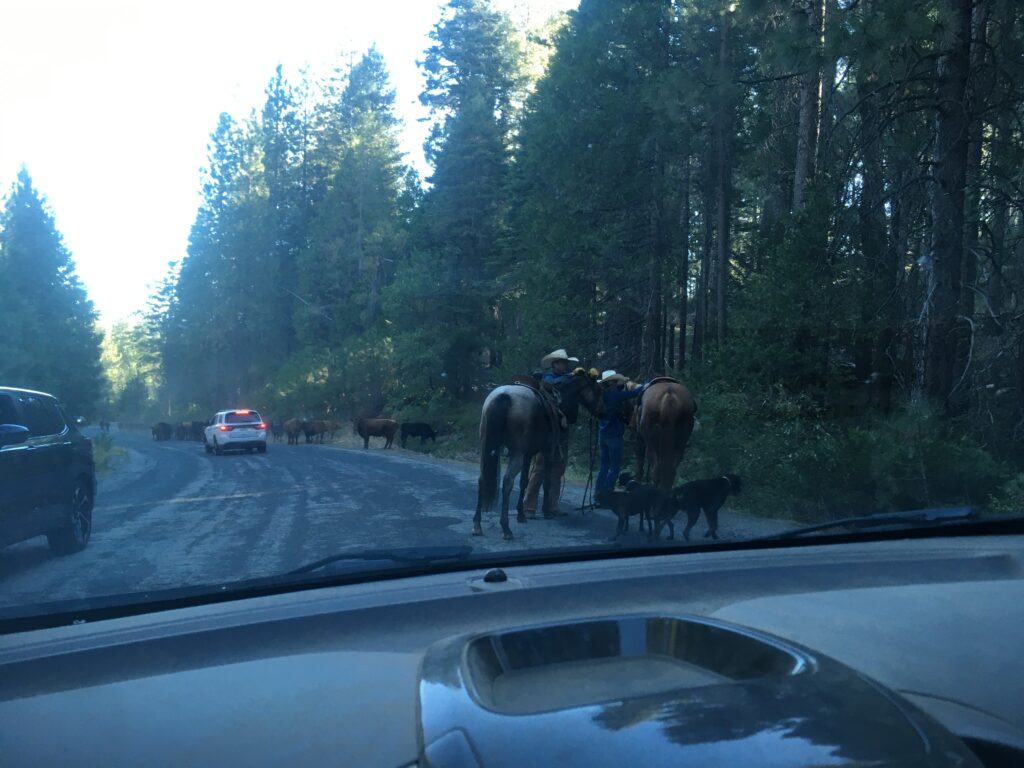
Cowboys and cattle dogs driving cattle down Evergreen Road to Ackerson Meadow. This is part of the longest remaining cattle drive in the state of CA. The calves were separated from their mothers this month, and next month the cows will be herded by horse-mounted cowboys about 50 miles down to their winter pastures in the Central Valley, utilizing highway 120 and its bridges over major rivers for part of the way.
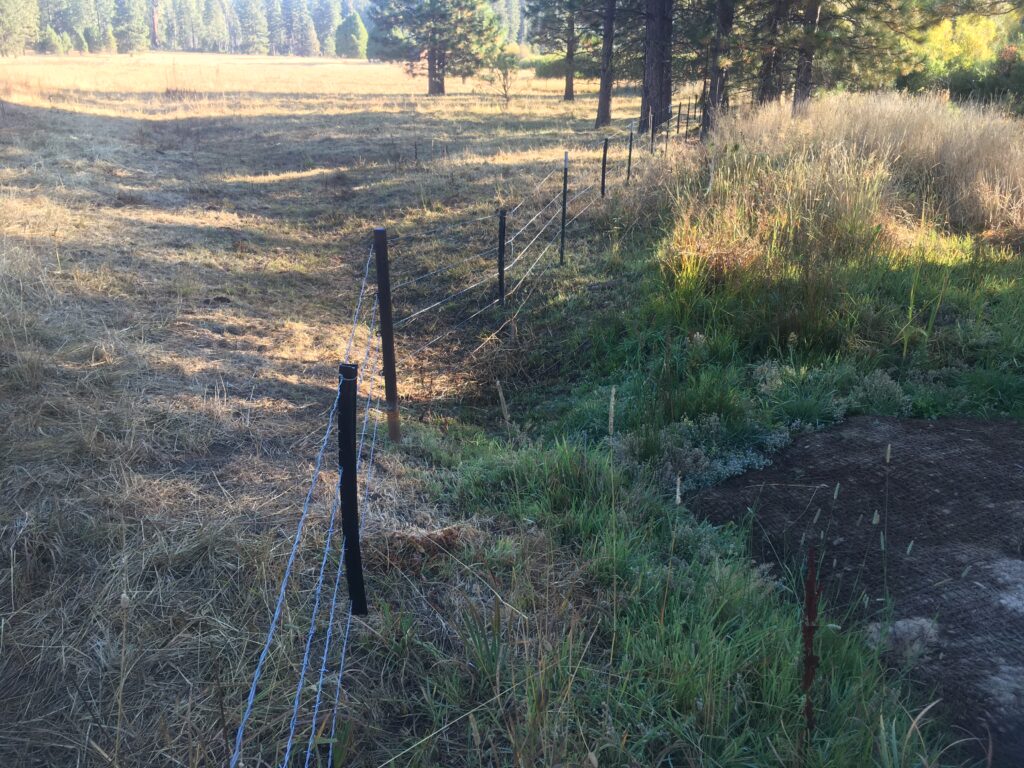
A fence separates the cattle gathering pasture at the left from the wetland restoration project to the right. Cattle will be excluded from the restoration for 3-5 years to allow plants to become densely established. Rewetted portions of unfilled meadow on the right are already thriving with ungrazed plants, whereas the small section of filled gully visible in the lower right is still mostly bare dirt with erosion blanket over it. The pasture to the left has been intensively grazed for a few days. Cattle squeezed their heads under the fence to get at the lush growth on the restoration side.
Ackerson Phase II is underway
Over the coming months the 7000-foot-long, 12-foot-deep, 100-foot-wide erosion gully in Ackerson Meadow will get filled in. Excavators are clearing out the gully to make way for the haul trucks to dump the fill soil that bulldozers will spread out and pack down in layers. As they move down the gully, the excavators pluck out willows by the root ball and set them aside for replanting in the filled surface. The narrow ribbon of wetland sod that fringes the bed of the erosion channel is similarly salvaged. By filling in the gully up to the level of the surrounding meadow, the human-caused change in the shape of the land (the geomorphology) is returned to its natural state. This restored geomorphology allows water to flow as it once did: spread out across the 1000-foot-wide valley as shallow slow flow rather than confined to a deep erosive torrent in a narrow erosion gully. The restored water flow (the hydrology) will rewet the entire valley, growing dense wetland plants where there is currently cheat grass and sand. That wetland vegetation will hold the soil in place, add organic matter underground, and provide habitat and food for a broad array of wildlife. It’s amazing to see the transformation taking place.
Ackerson Meadow restoration video
Thanks to Steve Bumgardner for making such a great video, and to everyone involved in this big bold restoration for making it happen!
